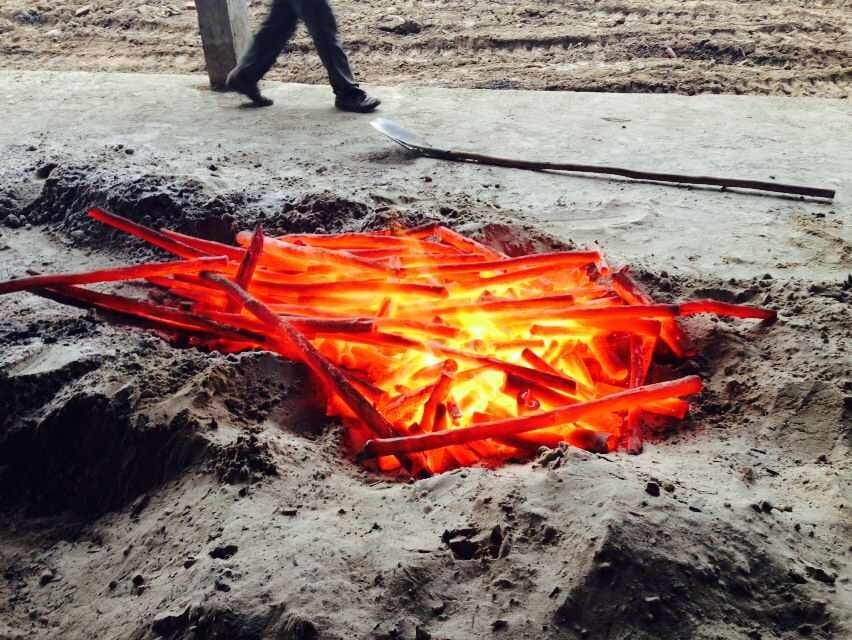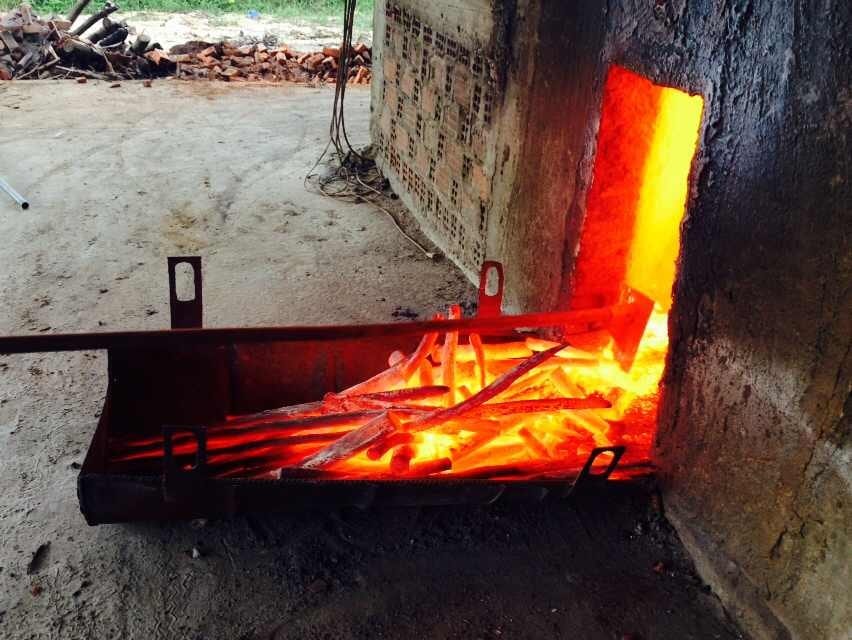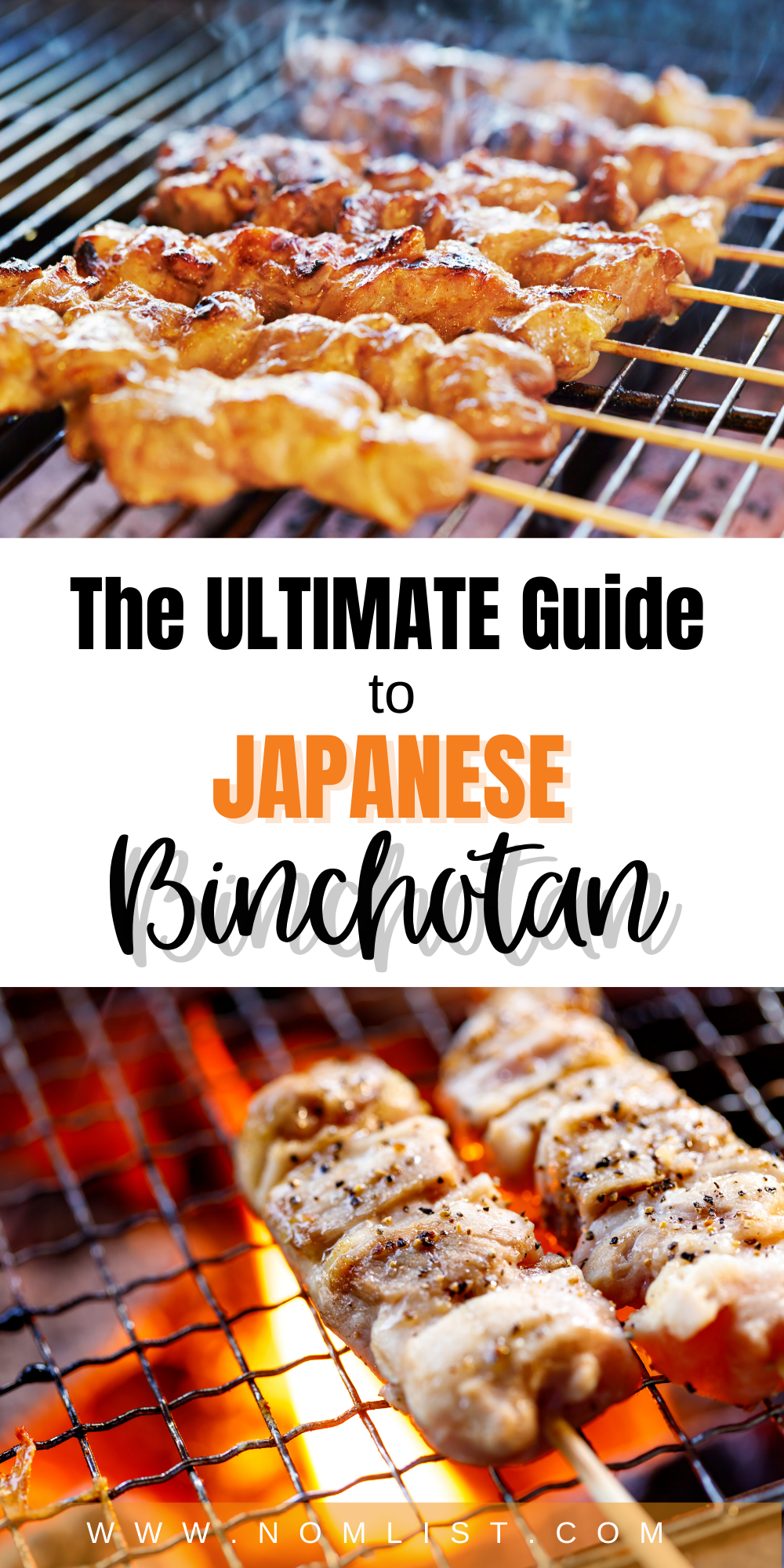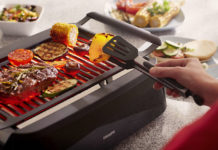
UPGRADE YOUR ASIAN BBQ WITH THE ULTIMATE JAPANESE BINCHOTAN GRILL...
If you're a fan of Japanese style barbecue, then you'll know exactly what the pure and delicious umami flavors can do to your meal. How exactly do the Japanese execute their barbecue so perfectly? The secret lies behind the Binchotan coals. Luckily, we did the homework for your and put together the Ultimate Guide to Japanese Binchotan for your barbecuing pleasure.
WHAT IS BINCHOTAN CHARCOAL?
Binchotan charcoal, also known as white charcoal or bincho-zumi, is the charcoal that's used primarily in Japanese barbecue. Generally, the charcoal is made from oak, which gives that clean and smokey flavor to the meats.

Because the coals are so clean in flavor, binchotan charcoals go well with cooking unagi and skewered chicken (yakitori).
Binchotan is also commonly used to purify water. The organic components in bintochan allow the chemicals to bind and be removed from the water, making it safe and delicious to drink. You can purchase binchotan charcoal water filters here.
Also, there are many other uses for binchotan such as binchotan towels and binchotan toothbrushes that tend to give an overall clean and natural feeling. However, we're here to give you the low down on binchotan for grilling your favorite meats.
WHITE CHARCOAL VS. BLACK CHARCOAL
If you're a fan of grilling, you probably are more familiarized with black charcoal. Charcoals like lump charcoal and charcoal briquets fall into these categories. These are commonly used in American style outdoor barbecues and have been around for centuries.
Lump Charcoal
Generally, people tend to favor lump charcoal because it's the next best thing to cooking with wood and is relatively environmentally friendly. The pieces of charcoal are made from wood scraps from saw mills and building materials.
However, since they are leftover chunks, the pieces aren't cut evenly giving various sizes to the charcoal and causing uneven cooking sometimes.
Charcoal Briquets
For those that are looking to hyperdrive their barbecuing, charcoal briquets are a popular choice. These are synthetic charcoals that are molded from treated sawdust and mixed wood chips. So, charcoal briquets tend to be the most expensive charcoals on the market.
However, these do tend to let off odd flavor if you try to cook with them before they are fully lit.
White Charcoal WINS!
In the end, white charcoal is the best of both worlds. Binchotan is used from whole stems and is one pure wood. Plus, they burn evenly and have virtually no flavor or extra chemical processing.
The only downfall to Bintochan is they may not be easily accessible depending on where you live in the world, making the cost more expensive. But, it's well worth the cost for a delicious meal without any funky chemical flavors! You can check out binchotan charcoal suppliers here.
HOW TO LIGHT BINCHOTAN CHARCOAL

One of the reasons why binchotan charcoal is used so widely in japan is because of it's efficacy and flavorless heat. Binchotan can burn for 3-5 hours at a time and can even be extinguished and re-ignited up to 2-3 times.
So, if you're wondering how to light Japanese charcoal, follow these steps:
1. Put the charcoals into a charcoal chimney (a pot with holes in the bottom) or place it over an open flame. This will need to be here for around 20-25 minutes until the charcoals are glowing consistently
2. Place the charcoal into your konro grill evenly one by one. If you only want to use half of the grill, be sure to stack them evenly on one side.
3. Finally, leave the charcoals to burn for about 15 minutes to preheat the grill. Move the charcoals around to get more even heat. Now you're ready to grill!
HOW TO MAKE BINCHOTAN CHARCOAL
If you're looking to get a little more creative and want to make your own binchotan charcoals, you're in for a bit of luck. Here's how Japanese white charcoals are made:
1. First, you need to select the right tree. Japanese oak (ubame) and eucalyptus wood make the best binchotan charcoals.
2. Next, you need to dehydrate the wood by burning it in a wood kiln. Ideally, you wan to make the opening as narrow as possible, which allows the heat to stay in.

3. Afterwards, you want to begin the carbonization stage of the charcoal. Add more heat by opening the hole slightly and allowing the heat in the kiln to rise up to 2,400°F. When the smoke turns a violet color, this means the carbonization is essentially complete . The smoke will then fade signaling you to close the hole completely and finish the burning process.
4. After two to three days, remove the coals one by one and cover with an extinguishing powder until the coals cool. Cut into lengths of about 6-8 inches.

THE BEST KISHU BINCHOTAN CHARCOAL
Want to cook up some of your favorite Japanese barbecue and need something a little more heavy duty? You're in luck! This IPPINKA binchotan bbq charcoal comes from Kishu and is some of the highest quality charcoals for grilling.
The package comes with 3 lbs of binchotan and its made from Japanese Oak shipped directly from Kishu, Japan. Also, it's all natural, chemical free, and long-burning.
The charcoal is also reusable if properly and stored, so you can optimize every last penny and get the best flavors for your barbecue.
For those of you who need some serious heavy duty grilling, this is the binchotan for you. This White Charcoal from Kirikomaru is 33 lbs of the highest quality charcoal that you can even use for your restaurants.
This is high-grade quality and professional use, so the price will be a little more expensive. However, it's absolutely worth the cost for the best flavor possible. It works well for yakitori, Japanese barbecue, and other high flavor profile foods.
Do bear in mind this is one of the most expensive but highest quality products we reviewed, so it certainly isn't for beginner grillers!
Japanese barbecue lovers, it's time to get your binchotan grill on with these IPPINKA Kishu select grade binchotan charcoals. These little glorious lumps are perfect for grilling and are all natural and chemical free.
The bag comes with 3 lbs of lump charcoal and consists of Kirimaru and Kowari binchotan charcoals. Kirimaru is a little thicker and not split while Kowari is thinner and split. This allows multi-layered flavor to enter your favorite barbecue meats.
Also, the charcoal is reusable if properly used and stored, so you can enjoy delicious barbecue over and over again!
It's time to get your Japanese grilling time on with these incredible Binchotan charcoals from The Bincho Grill. Weighing in at 22 lbs, this package comes with natural hardwood and high-grade charcoals perfect for yakitori and all of your Japanese grilling needs.
What's grate about these charcoals is that they are smokeless and odorless. They retain the most flavor of the food and don't leave it in your hose and hair.
Also, don't forget these charcoals are reusable, so you can get the best bang for your buck with this package.
Professionals, your search for the best Japanese binchotan is over! These pro-grade charcoals are the perfect way to up your Japanese barbecue game at home.
Weighing at 2 lbs, this is the perfect size for a small barbecue for a special occasion. The charcoals come from Kishu, Japan and are lump coal style. Because the product is natural, the size tends to vary approximately 5.5-6" in length with an average diameter of 0.8-1.2" The longer stick shape allows for better more even and longer burning.
Again, these are reusable, but make sure to properly store and use them first.
THE BEST JAPANESE KONRO GRILLS
If you're looking for a quick and easy way to use your binchotan charcoals, this little grill does wonders. It's the perfect size for a dinner of one or two.
The dimension are 9.65 x 10.24 x 7.87 inches and weighs in a 4.3 kilos, making it easy to use indoors or outdoors in your backyard. It's comes with a stainless steel grate that allows for even cooking on your meats.
The product itself is shipped from Keisodo, so it it authentically made in Japan. If you're just getting started in binchotan grilling, this is your best bet.
This is one of the most elegant looking grills we found, and it's got the grilling power to back it up! This traditional Hida tabletop charcoal grill is used in many Japanese style restaurants. Now, you can have it in the comfort of your own home.
Be careful! The product gets super hot during use so be cautious and alway use protective gear when handling. The dimensions are 11.4 in × 6.3 in × 5.1 in, Weight: 4.8 lb. The body of the grill is made from diatomaceous earth and the mesh is made from iron with zinc plating. Also, the base is made with Paulownia wood.
This is by far the most luxurious and traditional looking konro grill. It's looks beautiful and delivers the best quality Japanese bbq.


NomList.com is a participant in the Amazon Services LLC Associates Program, an affiliate advertising program designed to provide a means for sites to earn advertising fees by advertising and linking to Amazon.com. CERTAIN CONTENT THAT APPEARS ON THIS SITE COMES FROM AMAZON SERVICES LLC. THIS CONTENT IS PROVIDED 'AS IS' AND IS SUBJECT TO CHANGE OR REMOVAL AT ANY TIME. Product prices and availability are accurate as of the date/time indicated and are subject to change. Any price and availability information displayed on Amazon.com at the time of purchase will apply to the purchase of this product. All prices on this site may change and those considered valid are displayed on Amazon.com












